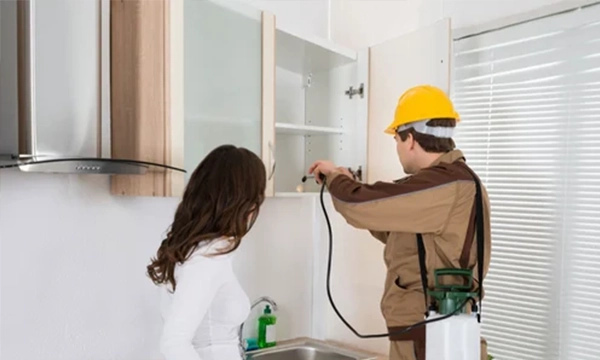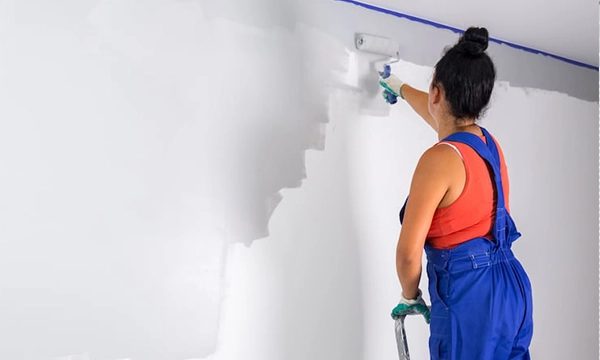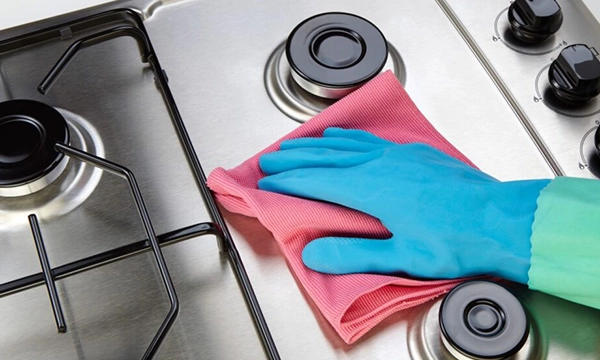Embracing Sustainability: Green Home Maintenance
As the world grapples with the impacts of climate change and environmental destruction, more and more people are realizing the importance of living in a resource-efficient way.
Ad
An important area where sustainability can be leveraged is home maintenance. Green home maintenance means making choices that are good for the environment and using methods that minimize your home’s environmental impact.
This article discusses ways to be more environmentally friendly when maintaining your home. These include reducing energy and water consumption, reducing waste, and using environmentally friendly materials.
Ad
1. Energy Saving
- Insulation and Sealing: If you want to make your home more energy efficient, the best thing you can do is make sure it is properly insulated and sealed. This keeps the house warmer in the winter and cooler in the summer, meaning you need to use less heating or air conditioning.
- Energy-efficient appliances: If you need to replace home appliances, choose appliances that use less energy. When you see the Energy Star label, it means the appliance meets strict energy efficiency regulations in the United States. EPA.
- LED lighting: Use LED or CFL bulbs instead of incandescent bulbs, which use less energy. LED lamps last longer, use less energy, and are available in different color temperatures, so there is always one that suits you.
- Smart Thermostat: Invest in a smart thermostat to better control the temperature in your home. These devices learn how you want your heating and cooling to work and then change the settings to use as little energy as possible. This will reduce your energy bills in the long run.
2. Reduce Water Consumption
- Low-flow fixtures: To reduce water consumption, you can use low-flow drains in toilets, faucets, and shower heads. These units provide a high water flow rate and significantly reduce water consumption for daily tasks.
- Rainwater harvesting: You may want to install a rainwater harvesting system to collect rainwater for purposes other than drinking, such as cleaning, watering plants, or flushing toilets. This makes people less dependent on traditional water sources and helps protect this precious resource.
- Drip irrigation: Use drip irrigation devices for landscaping instead of regular sprinklers. Drip irrigation delivers water directly to the roots of plants, so less water is lost through flow and evaporation.
3. Reduce Waste
- Composting: It’s a good idea to set up a composting system to remove food scraps, yard waste, and other organic matter. Composting not only reduces the amount of waste that ends up in landfills, but it also creates nutrient-rich compost that plants can use as food.
- Recycling Program: Establish a complete recycling program for your home. Clearly label the recycling bins and tell everyone in the household what can and cannot be recycled. This ensures that recyclable materials do not end up in landfills.
- Reusable products: Choose items that can be used multiple times instead of disposable items. Use cloth towels, water bottles, and shopping bags to reduce disposable waste. This small change can make a big difference over time.
4. Environmentally Friendly Materials
- Sustainable floors: If you are remodeling or installing new floors, consider using eco-friendly materials such as bamboo, cork, or reclaimed wood. These materials can be used repeatedly and are more environmentally friendly than standard hardwood floors.
- Low-VOC Paints: Choose low-VOC (volatile organic compound) or zero-VOC paint to color the interior and exterior of your home. These paints release fewer hazardous chemicals into the air, which helps improve indoor air quality.
- Recycled Content: Look for building products made from recycled materials. Recycled metal, glass, or plastic are all included. Using recycled materials reduces the need for new materials and helps recyclers recoup their money.
Conclusion
Adopting eco-friendly home care practices is a choice that can positively impact the world and contribute to a healthier place. By using environmentally friendly materials, saving water, and putting energy-saving ideas into practice, people can play a major role in the fight against climate change. As the world’s focus turns to sustainability, using green home care practices is not only the right thing to do, it’s the only way to make the future more resilient and sustainable.
Ad
FAQs
1. How do you take care of your green home?
Using environmentally friendly methods and choosing sustainable options in various areas of home care is what ‘green home care’ means. This includes reducing energy and water use, reducing waste, and ensuring the materials used are safe for the planet.
2. How can I ensure that my home uses less energy?
To save energy, make sure your home is well insulated and sealed, purchase Energy Star-rated appliances, switch to LED lighting, and consider purchasing a smart thermostat for better temperature control.
3. What are some ways to save water at home?
Some ways to conserve water include using low-flow taps, setting up rainwater harvesting systems, and watering plants via drip irrigation. These habits ensure that people use less water and become less dependent on traditional water sources.
4. What can I do at home to reduce waste?
Start composting kitchen and garden waste, set up a recycling program with clearly marked bins, and choose reusable items such as cloth napkins, water bottles, and shopping bags to reduce household waste.
3. How can I use environmentally friendly materials when building or repairing my home?
For building or renovating a home, eco-friendly materials include paints with low or no volatile organic compounds (VOCs), sustainable flooring such as bamboo and cork, and building materials made from recycled glass, metal, or plastic.
6. Why is it important to use energy-saving tools?
Appliances that use less energy help reduce electricity consumption, utility bills, and overall damage to the environment. When purchasing equipment, look for the Energy Star label to ensure it meets strict energy efficiency standards.
 6 Effective Home Pest Control Solutions
6 Effective Home Pest Control Solutions
Controlling pests inside and outside your home can be an ongoing battle. While you can hire a […]
More Revitalize Your Space with Paint Refresh
Revitalize Your Space with Paint Refresh
Do you want to give your living space a new look without spending a lot of money? […]
More Polishing Your Home Appliances: Simple Cleaning and Maintenance
Polishing Your Home Appliances: Simple Cleaning and Maintenance
Home appliances are an important part of our daily lives because they make work easier and faster. […]
More